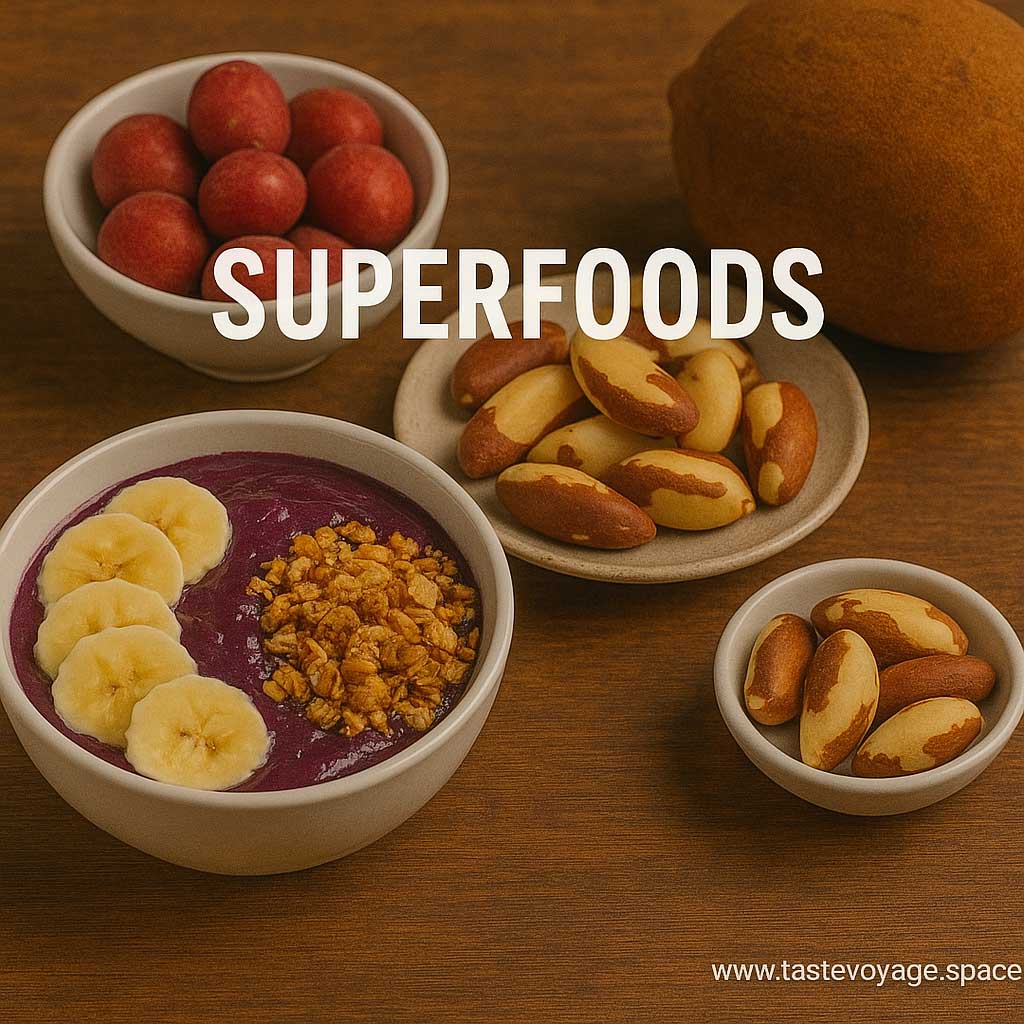Discover the Amazing Benefits of Caju: Brazil’s Cashew Superfruit
Travel the World Through Food >> Brazilian Cuisine>>Superfoods>> Discover the Amazing Benefits of Caju: Brazil’s Cashew Superfruit
Discover the Amazing Benefits of Caju: Brazil’s Cashew Superfruit
Discovering Caju: Brazil’s Cashew Superfruit
Brazil is renowned for its vibrant culinary traditions and diverse natural bounty. Among its most celebrated treasures is the caju, commonly known as the cashew, which holds a special place in Brazil’s food culture. Often celebrated as a superfruit, the caju offers more than just a delicious flavor; it embodies the rich heritage and innovative spirit of Brazilian Cuisine. Its unique combination of taste, versatility, and cultural significance makes it a truly remarkable ingredient.
The Cultural Significance of Caju in Brazil
The caju has been an integral part of Brazilian life for centuries. Traditionally, it is more than just a fruit; it is a symbol of abundance and resourcefulness. The cashew tree thrives in Brazil’s diverse climates and has become a staple in many communities. Its fruit and nut are deeply woven into local customs, festive gatherings, and everyday diets. The vibrant red and yellow hues of the caju’s skin reflect Brazil’s lively spirit, making it a colorful centerpiece in various culinary displays.
In many regions, the harvesting of caju is a communal activity, fostering bonds among neighbors and families. Its significance extends beyond nutrition, representing a connection to nature and tradition that reinforces communal identity. Over generations, Brazilians have cultivated and celebrated caju not just for its flavor but for its cultural vitality.
Culinary Significance and Uses of Caju
Caju’s culinary appeal lies in its versatility. The fruit’s sweet, tangy flavor complements a wide array of dishes, from refreshing beverages to elaborate desserts. It is often used to prepare juices, smoothies, and traditional drinks that are both revitalizing and deeply rooted in local customs.
Beyond beverages, the caju’s nut—commonly known as cashew nut—is cherished worldwide for its rich, buttery taste and nutritional value. In Brazil, cashew nuts are enjoyed roasted, salted, or incorporated into various dishes, offering a crunchy texture that enhances culinary creations. The nut’s significance extends to innovative uses such as nut milks, spreads, and even vegan cheeses, showcasing its adaptability and Health benefits.
In addition, the caju’s shell and byproducts are also utilized, demonstrating Brazil’s sustainable approach to its natural resources. For example, the shells can be processed to produce natural oils, adding further value to this superfruit.
The Health and Nutritional Value of Caju
Known as a superfruit, the caju is packed with nutrients that contribute to overall well-being. It is rich in antioxidants, vitamins, and minerals, including vitamin C, magnesium, and zinc. These elements support immune function, skin health, and energy levels. The cashew nut provides healthy fats, making it a nutritious snack option.
By incorporating caju into various aspects of cuisine, Brazilians celebrate not only its taste but also its health benefits. It exemplifies a holistic approach to food—delicious, nourishing, and meaningful.
Embracing Caju as a Cultural and Culinary Icon
The caju embodies Brazil’s deep connection to its natural environment and culinary innovation. Its presence in traditional and modern recipes highlights its enduring relevance. As a superfruit, it continues to inspire new culinary trends while honoring centuries-old customs.
By exploring the multifaceted world of caju, you gain insight into Brazil’s vibrant food culture and the importance of celebrating natural ingredients. Whether enjoyed in a refreshing juice or as a crunchy snack, caju stands as a testament to Brazil’s rich culinary heritage and its ongoing love affair with the natural world.
Conclusion
Caju, Brazil’s cashew superfruit, is much more than an ingredient; it is a cultural emblem that showcases the country’s resourcefulness and culinary artistry. Its vibrant history, versatile uses, and health benefits make it a treasured part of Brazilian life. Embrace the beauty of caju and discover how this extraordinary fruit continues to inspire and delight across generations.
